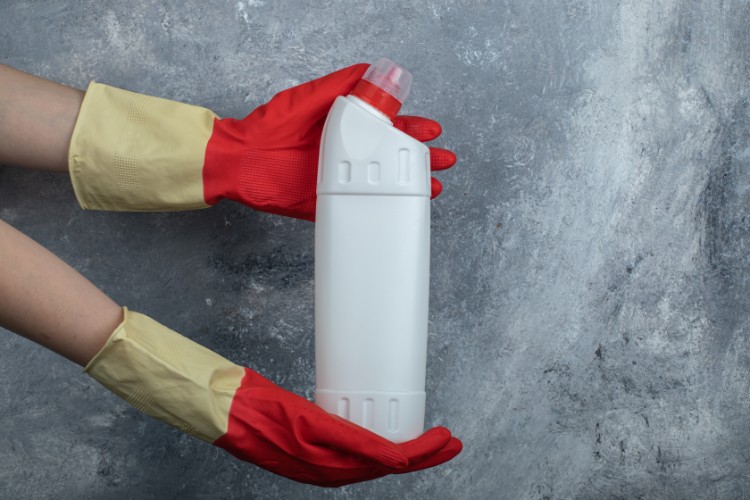Keep Bleach Fresh: Secrets to Stable Hypochlorite
Why Stability Matters in Hypochlorite Solutions
We’ve all been there. You produce a fresh batch of sodium hypochlorite solution, and before you know it, the strength drops like a stone. That hurts. Not only does it affect disinfectant power, but it also messes up your entire dosing plan.
So here’s our guide on how to stabilize sodium hypochlorite solution—without turning your setup into a chemistry lab from a sci-fi movie.

What Wrecks Sodium Hypochlorite?
Before diving into solutions, let's expose the enemies. Sodium hypochlorite isn't just reactive—it's a diva. It breaks down when it doesn’t get its way.
Heat Turns It Angry
Warm temperatures speed up decomposition. Every 10°C increase cuts shelf life by half.
Light? No Thanks
UV rays slam hypochlorite hard. Exposure triggers chlorine gas release and breakdown.
Metal Ions Stir Chaos
Copper, nickel, and iron ions act like catalysts. They turn stable bleach into a wild breakdown reaction.
Low pH = Trouble
Keep pH high. Acidic conditions rapidly convert hypochlorite into chlorine gas. That’s a safety and stability nightmare.
Our Daily Fight: Stabilizing Sodium Hypochlorite Solution
We face this battle every day at Shine. As sodium hypochlorite generator manufacturers, we don’t just make machines—we fight for long-lasting, high-quality hypochlorite. Let’s dig into the tools that win that war.
Best Practices to Stabilize Hypochlorite Solutions
Keep It Cool
Lower storage temperature to 5–15°C. Cooling slows down the reaction rate. Bonus? Reduced gas pressure in tanks.
Shield from Light
Store in opaque containers. Black or blue HDPE tanks work best. Keep tanks away from windows or sunlit areas.
Maintain High pH
Target pH 11–13. Add caustic soda (NaOH) to maintain alkaline conditions. This keeps chlorine gas locked in solution.
Use Pure Water
Soft or deionized water reduces the metal ion concentration. No impurities = longer life.
Avoid Contaminated Surfaces
No rusty pipes. No metal nozzles. No compromise. Use plastic or titanium for every part in contact with the solution.
Use Fresh Solution Often
Don’t store it forever. Make smaller batches with your sodium hypochlorite generator and use them quickly.
Stabilizing Sodium Hypochlorite in Production Systems
When you run a generator, things move fast. Here’s what we do to stabilize during production.
1. Automated pH Control
We monitor and adjust pH automatically. Our sensors keep it locked at a safe level.
2. Closed Loop Systems
Exposure to air increases decomposition. We use closed reactors to keep oxygen and CO₂ out.
3. Real-Time Temperature Control
Our system cools electrolytes during production. Less heat = less breakdown.
4. Dechlorination Traps
We trap any chlorine gas formed to avoid secondary reactions. It also makes our system safer.
Additives: Yes or No?
There’s buzz about additives. Some swear by stabilizers like sodium silicate or chelating agents. We’ve tested them, and results vary.
· Sodium silicate helps reduce metal ion effects
· EDTA binds metal ions but can be tricky in water treatment applications
· Commercial stabilizers? Use with caution—some reduce disinfection strength
In our opinion? Focus on process control first. Additives are plan B.
Storage Tips: Bleach Isn’t Wine
Sodium hypochlorite doesn’t age well. Here's how to avoid the “old bleach blues.”
Use FIFO (First In, First Out)
Label everything with production dates. Use the oldest batch first.
Avoid Bulk Storage
Small tanks cool easier and reduce light exposure. Decentralize when possible.
Inspect Regularly
Check for color change, cloudiness, or odor. A sharp chlorine smell may signal decomposition.
Key Parameters to Watch
Stabilizing sodium hypochlorite solution means watching numbers. Here are our daily targets:
Parameter | Target Value |
pH | 11.5 – 13 |
Temperature | < 15°C |
Active Chlorine | 8–15% |
Storage Time | < 30 Days |
Metal Ions | < 0.1 ppm |
Keep within these ranges, and you’ll keep your hypochlorite stable—and potent.
The Shine Approach: Safe, Stable, Scalable
We didn’t guess our way into hypochlorite success. We engineered it. Every sodium hypochlorite generator we design uses:
· Precise brine dilution control
· Titanium-coated electrodes
· Real-time sensors
· Anti-corrosion designs
· Auto-clean cycles
That’s how we extend the shelf life of our sodium hypochlorite solution—without sacrificing strength or safety.
Funny Story: The Melted Hose Incident
One client stored hypochlorite in a transparent plastic drum in summer. Hose melted. Bleach spilled. The smell cleared their whole facility.
Lesson learned? Sunlight is bleach’s worst enemy.
Conclusion: Stability Isn’t Optional
Let’s wrap it up. If you’re wondering how to stabilize sodium hypochlorite solution, focus on these five steps:
1. Control temperature
2. Eliminate light
3. Keep pH high
4. Avoid metals
5. Monitor everything
Whether you’re using hypochlorite solutions in water treatment, healthcare, or food sanitation, stability is key. And if you’re producing it onsite using a sodium hypochlorite generator, you’ve got the power to perfect it.
Don’t settle for weak bleach. Stabilize it like a pro.
References
1. WHO - Disinfectants and Disinfection By-products
